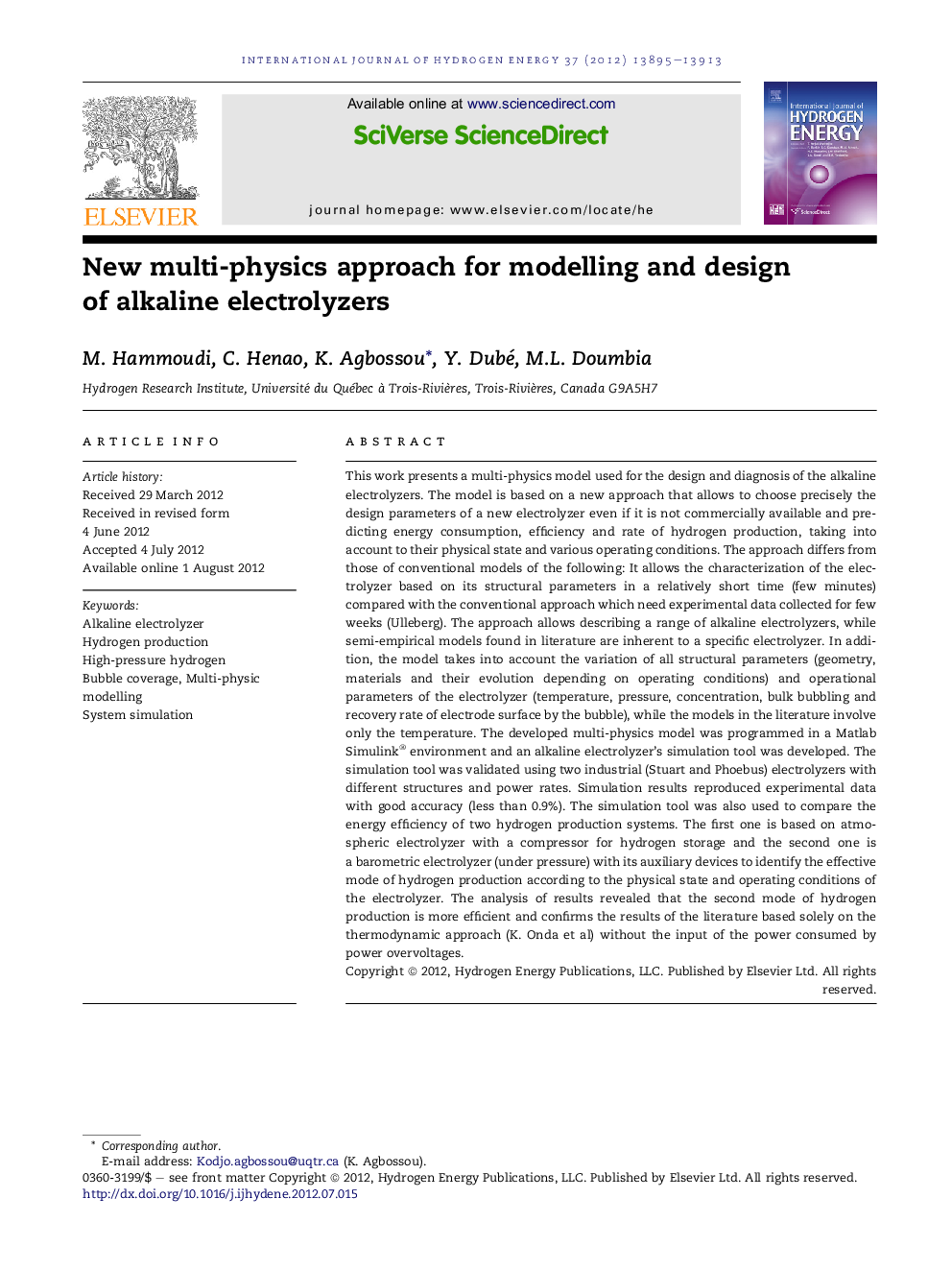| کد مقاله | کد نشریه | سال انتشار | مقاله انگلیسی | نسخه تمام متن |
|---|---|---|---|---|
| 1274733 | 1497550 | 2012 | 19 صفحه PDF | دانلود رایگان |

This work presents a multi-physics model used for the design and diagnosis of the alkaline electrolyzers. The model is based on a new approach that allows to choose precisely the design parameters of a new electrolyzer even if it is not commercially available and predicting energy consumption, efficiency and rate of hydrogen production, taking into account to their physical state and various operating conditions. The approach differs from those of conventional models of the following: It allows the characterization of the electrolyzer based on its structural parameters in a relatively short time (few minutes) compared with the conventional approach which need experimental data collected for few weeks (Ulleberg). The approach allows describing a range of alkaline electrolyzers, while semi-empirical models found in literature are inherent to a specific electrolyzer. In addition, the model takes into account the variation of all structural parameters (geometry, materials and their evolution depending on operating conditions) and operational parameters of the electrolyzer (temperature, pressure, concentration, bulk bubbling and recovery rate of electrode surface by the bubble), while the models in the literature involve only the temperature. The developed multi-physics model was programmed in a Matlab Simulink® environment and an alkaline electrolyzer’s simulation tool was developed. The simulation tool was validated using two industrial (Stuart and Phoebus) electrolyzers with different structures and power rates. Simulation results reproduced experimental data with good accuracy (less than 0.9%). The simulation tool was also used to compare the energy efficiency of two hydrogen production systems. The first one is based on atmospheric electrolyzer with a compressor for hydrogen storage and the second one is a barometric electrolyzer (under pressure) with its auxiliary devices to identify the effective mode of hydrogen production according to the physical state and operating conditions of the electrolyzer. The analysis of results revealed that the second mode of hydrogen production is more efficient and confirms the results of the literature based solely on the thermodynamic approach (K. Onda et al) without the input of the power consumed by power overvoltages.
► We use multi-physics approach to model the cell voltage of an alkaline electrolyzer.
► We analzse the impact of pressure, temperature concentration and bubbling.
► Simulation results were confirmed by experimental data with good accuracy (<0.9%).
► The hydrogen production is enhanced by temperature but reduced by the pressure.
► The pressurized electrolyzer system is more efficient than the atmospheric one.
Journal: International Journal of Hydrogen Energy - Volume 37, Issue 19, October 2012, Pages 13895–13913